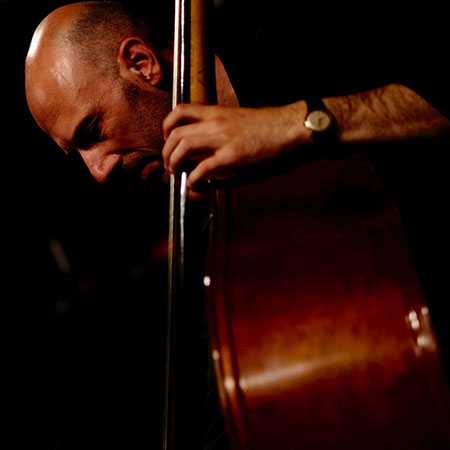

Gypsy jazz upright bass, Vol. 1
In this video course, Arnoud shows you how to play upright bass in the style of gypsy jazz — the acoustic swing music of Django Reinhardt. Read full description…
In this video course, Arnoud shows you how to play upright bass in the style of gypsy jazz — the acoustic swing music of Django Reinhardt.
Gypsy jazz is different from straightahead jazz, because the rhythm is provided by a rhythm guitar instead of drums. This calls for a different feel in the bass playing. Here, Arnoud dives into details on certain things you should and shouldn’t do when you’re trying to get a good sound in a gypsy-jazz band.
The course is divided into three parts. First, for those of you who are coming from electric bass, Arnoud covers basic upright bass techniques. He talks about scales and some exercises to build strength and tone. Then he covers subtleties of bass playing that are particular to gypsy jazz — how to sound “in the style.”
Finally, the bulk of the course focuses on playing real bass lines on standard tunes in the repertoire. The goal there is to give you plenty of specific bass lines to practice, and also to give you an idea of how Arnoud builds bass lines in general.
The intended audience is beginner to intermediate upright bass players, or advanced players who have never played gypsy jazz. Perhaps you’ve played bass for a while but are new to the style, or perhaps you’re already playing gypsy jazz but want to get tips from somebody who’s been doing it for a long time.
Like everything on Soundslice, this course is fully transcribed and has interactive notation synced with the video. Everything is notated in standard notation and tab.
Enjoy the course!
Preview the course
Full course
| Lessons |
| Introduction |
| Beginner position tips |
| Tips for people coming from electric bass |
| Right-hand exercise |
| Position exercise #1 |
| Position exercise #2 |
| Scale exercises |
| How to practice with a metronome |
| Playing with gypsy jazz guitarists |
| Keeping it simple |
| Tips on volume |
| Different approaches to the “two” feel |
| Turnaround example with different feels |
| Tips on walking bass lines |
| Repertoire intro |
| “I Can’t Give You Anything But Love” (two feel 1) |
| “I Can’t Give You Anything But Love” (two feel 2) |
| Christophe changes |
| “I Can’t Give You Anything But Love” (walking bass) |
| Major blues performance |
| Minor blues performance |
| Rhythm changes performance (two feel 1) |
| Rhythm changes performance (two feel 2) |
| Rhythm changes performance (walking bass) |
| “Joseph Joseph” performance (two feel 1) |
| “Joseph Joseph” performance (two feel 2) |
| “Joseph Joseph” performance (walking bass) |
| Bossa technique |
| Bossa (“Bossa Dorado” performance) |
| Bolero (“Troublant Bolero”) |
| Ballad (“Danse Norvegienne”) |
| “Minor Swing” bass break |
| “Minor Swing” performance |
| Conclusion |
Similar courses
Want to buy this course for somebody else? No problem. Just select the gift option during checkout.
About Soundslice
Soundslice is the ultimate learning and practice environment for music. New here? Learn how our store works.
Buy with confidence. If you’re not satisfied with your purchase, just contact us within 7 days for a hassle-free refund.








